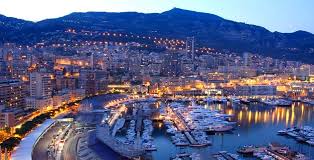monaco
Monaco, then turbasque, remained under Roman rule until the collapse of the Western Roman Empire in 476. The place was then occupied and ravaged by the Saracens and various barbarian tribes. While Monaco was practically depopulated, the Saracens were expelled in 975 and in the eleventh century, the place was once again populated by Ligurians (this time, we must understand populations speaking a Romance language of northern Italy).
In 1191, the Germanic Roman Emperor Henry VI conceded the sovereignty of a few ares of the district of Condamine and the rock that belonged to the lordship of La Turbie in Genoa: the future Monaco. On June 10, 1215, a detachment of gibelins led by Foulques de Castello14 began the construction of a fortress on the rock of Monaco. This date marks the beginning of the modern history of the Principality of Monaco.
The Ghibellines built their fortress to make it a strategic military position and a means of controlling the area, they also established homes at the base of the Rock to support the garrisons. To attract the inhabitants of Genoa and surrounding towns, they offered land and taxed newcomers.
View of Monaco around 1890 - 1900.
Monaco is ruled by the Grimaldi dynasty since a legend15 on the founder François Grimaldi, said Malizia (François Malice): according to this legend16, in the night of 8 to 9 January 1297, François Grimaldi disguised as a Franciscan monk (by coincidence, " monaco "means monk in Italian17) entered one of his companions (also wearing a monk's coat) into the fortress without attracting suspicion, thus opening up to his soldiers who seized it easily (hence the nickname "the wily" of Francis). The traces of this origin can be found on the coat of arms of the principality, which includes two monks holding a sword.
On April 10, 1301, François' cousin, Rainier I of Monaco, had to leave the fortress then taken over by the Genoese. Charles II of Anjou gave him in compensation the castles of Villeneuve, Vence and Cagnes, the Grimaldi exile in Provence18.